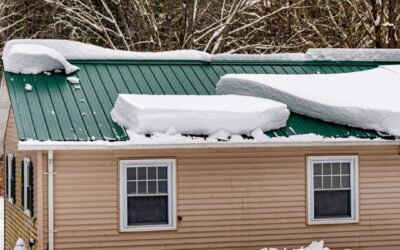Roofing contractors install a drip edge at the edges of the roof. The drip edge, which should be corrosion-resistant, seals and protects this part of the roof. Below are some of the major functions and profiles of the drip edge.
Drip Edge Purposes
The roof drip edge serves several purposes. Below are the major ones.
Preventing Fascia Water Damage
The fascia board sits and acts as a transition trim between the roofline and the house. Wood is a common fascia board material, though other materials also work. Unfortunately, exposure to moisture can cause the wood to rot and fail prematurely. The roof drip edge directs roof water away from the fascia board to prevent such damage.
Assists Gutters in Water Drainage
Proper drainage requires water from the roof to get into the gutter, directing the water into the downspouts. The drip edge plays a role in efficient roof drainage by channeling water into the gutters. That way, the water doesn’t splash on the house and damage its foundation and siding.
Protects Decking Edge Water Damage
Water flowing down the roof is not the only way that moisture can cause damage. Moisture damage also occurs if strong storms drive rain under the roof’s edge. Such wind-driven rain can reach the deck’s edge, which again is commonly wood. A drip edge that hangs over the roof’s edge prevents wind-driven rain from reaching the deck edge.
Reduces Ice Dam Damage
Ice dams form when the upper surfaces of the roof are warmer than the lower surfaces. Snow on the upper surfaces melts and refreezes on the lower surfaces, preventing further water from flowing off the roof. Ice dams cause damage in various ways; for example, they can melt and penetrate the roof. Again, the drip edge protects against moisture from getting into the roof.
Prevents Pest Infestation
Lastly, the drip edge prevents pests from getting into the house through the roof. A conventional residential roof consists of several parts and materials. Some of these parts, such as the decking and fascia, have small gaps between them that small pests can use to get into the attic. The drip edge seals these gaps and reduces the risk of pest infestation.
Drip Edge Profiles
Roofing drip edges come in different profiles. Below are the three major profiles.
1. Type C or L Style
The drip edge consists of a single piece of material bent at a 90-degree angle. The bending gives that material an L-shape, so some people call the drip edge an L Style. The bottom of the material has a flange. One end of the L slips under the roofing material sits on top of the fascia.
2. Type D or T Style
In this case, the drip edge material bends to form a T shape, hence the T Style designation. Again, the drip edge has a flange at the bottom. This type of drip edge is more efficient at water damage prevention than other types of drip edges. An extra piece of material that goes between the roof deck and the house gives Type D drip edge its T shape and efficiency.
3. Type F
The third type of drip edge has a long leading edge that extends right into the gutter. As such, some people refer to this type of drip edge as a gutter apron. The longer leading edge means you don’t have to remove an old drip edge when installing a new one – you just install the new one over the old one.
Volpe Roofing has been active in the roofing industry since 1970. They can design, install, or replace your roof professionally. Contact them for roofing services and benefit from their affordable services.
Is your roof damaged? It would be best if you acted quickly. Otherwise, your home belongings could suffer severe structural damage. Learn more right away.





